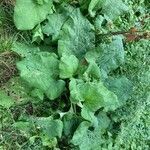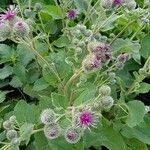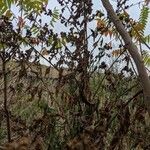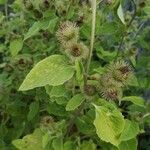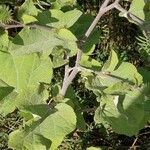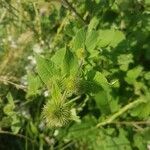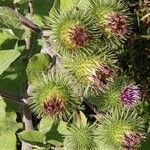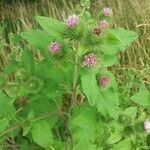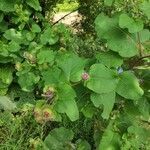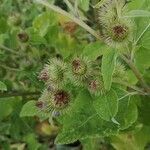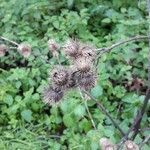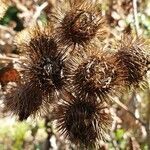Plants to 50–300 cm. Basal leaves: petioles hollow (sometimes only at base), 15–50 cm, thinly to densely cobwebby; blades 30–60 × 15–35 cm, coarsely dentate to subentire (rarely deeply dissected), abaxially ± thinly gray-tomentose, adaxially green, sparsely short-hairy. Heads in racemiform or paniculiform clusters, sessile to pedunculate. Peduncles 0–9.5 cm. Involucres 15–40 mm diam. Phyllaries linear to linear-lanceolate, glabrous to densely cobwebby, inner often purplish tinged, margins often minutely serrate with fine teeth, puberulent with glandular and or eglandular hairs. Florets 30+; corollas purple, pink, or white, 7.5–12 mm, glabrous or limb glandular-puberulent. Cypselae dark brown or with darker spots, 5–8 mm; pappus bristles 1–3.5 mm. 2n = 32 (Germany), 36 (as A. nemorosum).
Herb to 1 m high. Stems thinly pilose with arachnoid hairs. Leaves green above with very sparse multicellular hairs, grey-green below with arachnoid hairs; sessile glands abundant; petioles (of basal leaves) hollow. Capitula arranged racemosely along stems; peduncles 0.5–3.0 cm long; involucre broadly ovoid to globose, 10–16 mm diam. at anthesis excluding patent outer bracts; median involucral bracts erect, linear-deltate, 10–13 mm long, 0.9–1.3 mm wide at base, glabrous or with a few glandular hairs. Corolla tube 7–8.5 mm long; lobes 1.3–1.6 mm long. Anthers 3.0–3.5 mm long. Achenes compressed-obovoid, 5.2–6 mm long, brown and black, rugose. Pappus bristles 60–100, of differing lengths, to 3.3 mm long.
A herb which keeps growing from year to year. It grows 60-100 cm high. The leaves are heart shaped and have teeth around the edge. The leaves are pointed towards the tip. The leaves near the base have hollow stems. It has a cluster of small flowers. They form heads with very short stalks. There are bracts around these flower heads which are shorter than the flowers. The flower head is purple. There are white styles in the centre.
